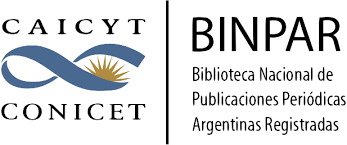Design, forms and models of the areas destined for conservation: its impact on individual fragility and the National System of Protected Areas of Argentina
Abstract
The expansion of the area covered by protected areas must be linked to a better ordering of the territories and the functions they fulfill, within the general spatial matrix, to ensure the protection of biodiversity and guarantee the flow of environmental services expected from the model in progress. The 49 units of the Argentina system of national protected areas of -as part and reference of the total protected areas of the country- were delimited according to frequently irregular polygons, whose shape affects governance and impacts on the territory. The objective of this work is to morphometrically analyze the system through multiple indices, as an advance for a more complex evaluation of the insertion of protected spaces within their socio-ecosystems. Polygons in general are far from ideal, especially in areas designed and created in recent decades. This study is descriptive, but it offers data and makes it easy to interpret, along with other variables, the insertion, operation, exchange flows and efficiency of protected areas.
Downloads
Downloads
Published
How to Cite
Issue
Section
License

This work is licensed under a Creative Commons Attribution-NonCommercial-ShareAlike 4.0 International License.
Aquellos autores/as que tengan publicaciones con esta revista, aceptan los términos siguientes:- Los autores/as conservarán sus derechos de autor y garantizarán a la revista el derecho de primera publicación de su obra, el cuál estará simultáneamente sujeto a la Licencia de reconocimiento de Creative Commons (indicada abajo) que permite a terceros compartir la obra siempre que se indique su autor y su primera publicación esta revista.
- Los autores/as podrán adoptar otros acuerdos de licencia no exclusiva de distribución de la versión de la obra publicada (p. ej.: depositarla en un archivo telemático institucional o publicarla en un volumen monográfico) siempre que se indique la publicación inicial en esta revista.
- Se permite y recomienda a los autores/as difundir su obra a través de Internet (p. ej.: en archivos telemáticos institucionales o en su página web) antes y durante el proceso de envío, lo cual puede producir intercambios interesantes y aumentar las citas de la obra publicada. (Véase El efecto del acceso abierto).

Esta obra está bajo una Licencia Creative Commons Atribución-NoComercial-CompartirIgual 4.0 Internacional.






